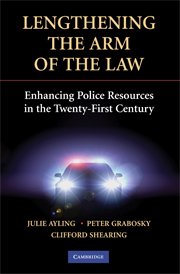References
Published online by Cambridge University Press: 05 June 2012
- Type
- Chapter
- Information
- Lengthening the Arm of the LawEnhancing Police Resources in the Twenty-First Century, pp. 257 - 294Publisher: Cambridge University PressPrint publication year: 2008



